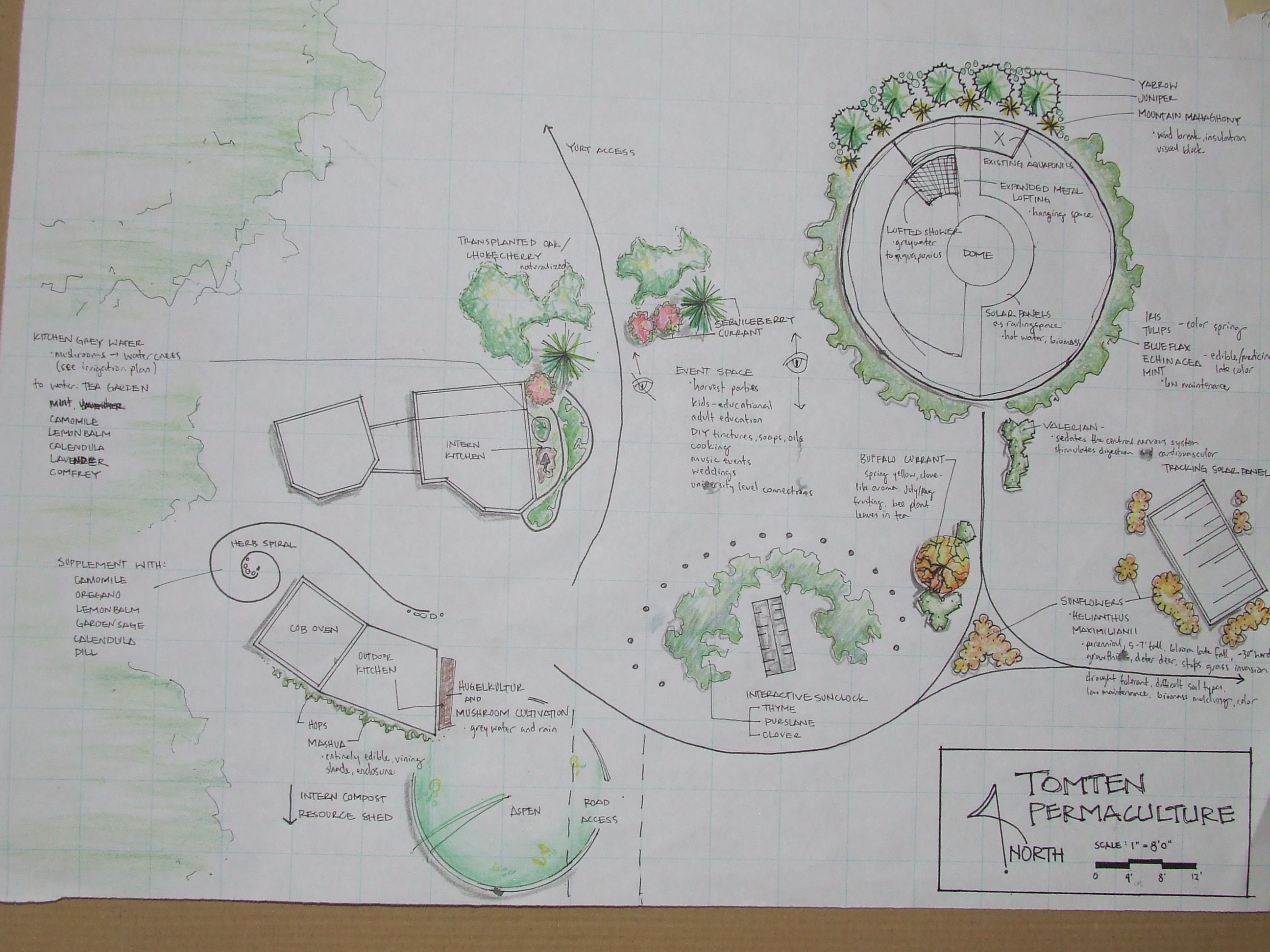
08 Aug EcoAction Partners: The Permaculture Path to Resilience

Zone 1 design
From week one at hot and dry Redlands Mesa to week two on Tomten Farm where both rain and temperatures fell, the fourth annual Permaculture Design Course was an exercise in adaptation and flexibility. Thirteen students, twelve permaculture principles, five co-instructors, three farms, and one amazing cook came together to learn, build community, stretch brains, and create design frameworks for a resilient future.
Permaculture is a term coined by Australians Bill Mollison and David Holmgren back in the early 70’s. Definitions vary person to person, but Mollison defined permaculture this way:
“…a sustainable design system stressing the harmonious interrelationship of humans, plants, animals, and the Earth. The core of permaculture is design and the working relationships and connections between all things.”
What does that mean when 13 eager and interested students have gathered round to learn more from five experienced and engaged co-teachers?
For us it first meant exploring the ethics: care for people, care for the earth, and share the surplus. Next we explored the principles. Permaculture is a human-centric design system, but at its heart incorporates knowledge of all the kingdoms of nature, biomimicry, geology, and geography, weather and climate, plant and animal care and characteristics, and much more.
The principles each student learns to embrace are:
• Observe and interact
• Catch and store energy
• Obtain a yield
• Apply self-regulation and accept feedback
• Use and value renewable resources and services
• Produce no waste
• Integrate rather than segregate
• Creatively use and respond to change.
And our teaching team’s addition…
• Enjoy the beauty and have fun!
Practically speaking the first week involves exposing students to a huge amount of knowledge and theory, tempered with strategic doses of hands-on work to allow the principles to sink in. My fellow instructors include Robyn Wilson, with strong Central American permaculture experience; Daniel Aragon, former farm intern; compassionate artist, and soon to be graduate student; Wind Clearwater, permaculture landscape designer and botanist extraordinaire; and Pat Frazier, biodynamic dynamo and extraordinary healer. We incorporate short ‘’design slams” during which we pose a challenge and then give just a few minutes to on-the-spot teams to come up with ideas for a design that addresses that particular issue on the landscape. An example: “Here’s an area in front of the greenhouse and barn. There’s a compost pile that has to have tractor access, but the area is mostly bare ground

Hollie and Jake begin their design project
and needs to be productive and beautiful. What would you do?”
We camped the first week at Peace & Plenty Farm, home to teacher Pat and visited Wind’s oasis nearby for a completely different landscape. Then the final week we were on Tomten Farm. The design challenges were: 1) whole farm irrigation and water management; 2) animal production, current and future; 3) Zone 1 optimization, integrate growing, educating and ecosystem services near the house; and 4) garden design inside the deer fence. Teams were formed, lectures and activities continued, but the bulk of week two was dedicated to design. The results? Incredible! Each group presented well-
planned and thought-through designs that incorporated the principles, the “client’s” wishes and abilities, and the landscape and limiting factors while letting their creative juices flow.
This particular group of students was fantastic. From a soon-to-be high school senior, to a nearing retirement age teacher our group was diverse, intelligent, engaged, and creative. We came together, created a supportive community and each and every one of us learned so much.
Having those two weeks of intensive community and solution-based effort, it’s now very hard to listen to the news as I drive in to my desk in Telluride. The challenges we face are immense. The Permaculture Design Course was a shining opportunity to build knowledge, join hands, and use those challenges as opportunities to create hopeful solutions. Look for more this fall as we hope to bring Permaculture for Professionals to fruition for a short, sweet intro to this design system for a resilient future.
If you want to learn more about local and regional permaculture happenings, please contact me at kholstrom@gmail.com.
We’d love for you to be involved.


Sorry, the comment form is closed at this time.